- 翰林提供学术活动、国际课程、科研项目一站式留学背景提升服务!
- 400 888 0080
Edexcel IGCSE Biology 复习笔记 5.4.2 Cloning Mammals
Edexcel IGCSE Biology 复习笔记 5.4.2 Cloning Mammals
Cloning Mammals
Embryo cloning
- It is possible to clone animals using embryo transplants
- For example, if a farmer wants the best cattle, they must first create an offspring from the best bull and best cow, and then clone this offspring to create many genetically identical copies (clones)
- This process is known as embryo cloning and is achieved in the following way:
- Egg cells from the best cow are artificially fertilised using sperm cells taken from the best bull
- This forms an embryo
- The developing animal embryo is then split apart many times before the cells of the embryo become specialised
- This forms many separate embryos that are genetically identical
- These cloned embryos are then transplanted into host mothers
- The calves born from these host mothers are all genetically identical
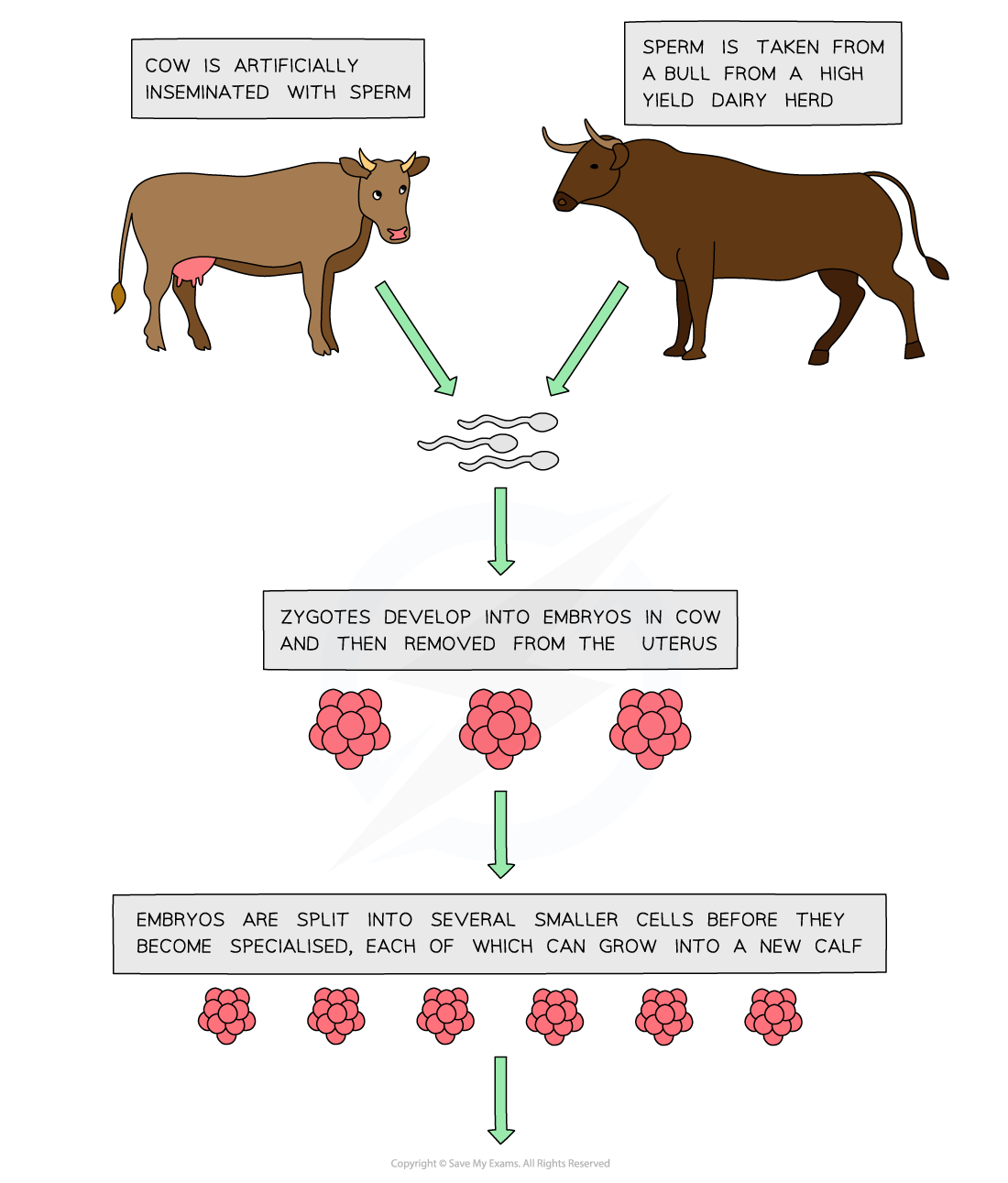
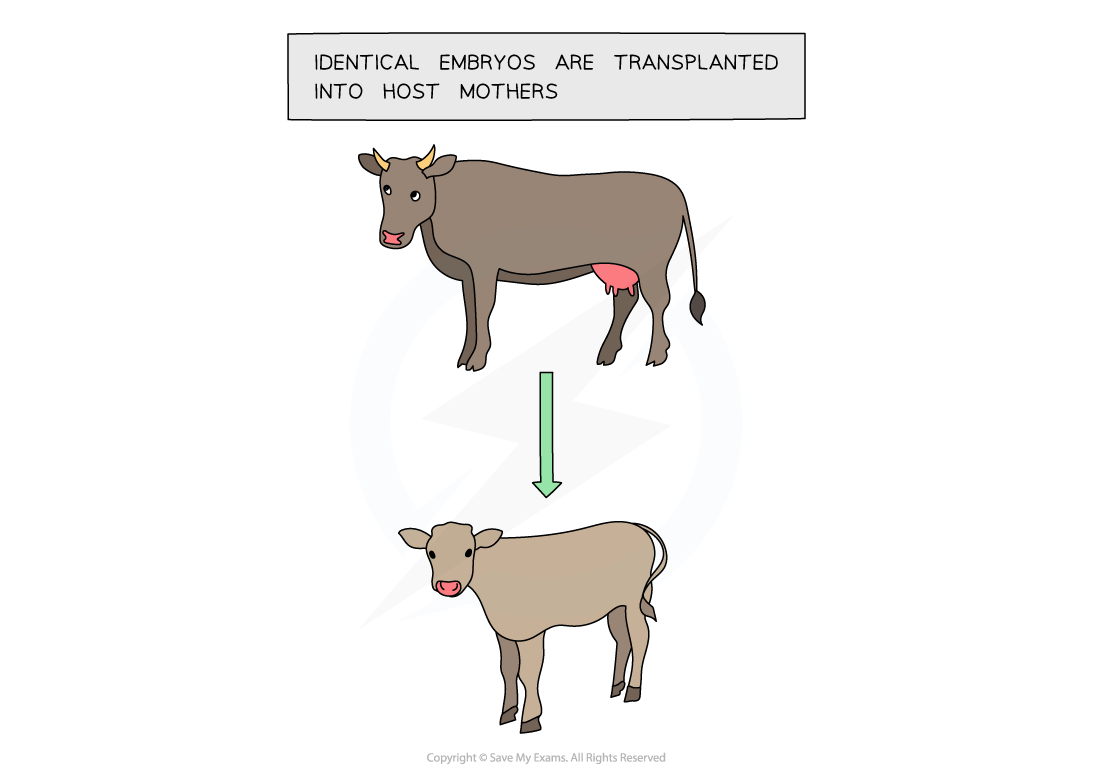
Embryo cloning
Adult cell cloning
- Adult cell cloning is achieved in the following way:
- The nucleus is removed from an unfertilised egg cell
- The nucleus from an adult body cell, such as a skin cell, is inserted into the egg cell
- A very small electric shock stimulates the egg cell to divide (by mitosis) to form an embryo
- These embryo cells contain the same genetic information as the adult skin cell
- When the embryo has developed into a ball of cells, it is inserted into the womb of an adult female (known as the surrogate mother) to continue its development until birth
- This process was used to create the first clone (exact genetic copy) of a mammal in 1996
- Scientists in Scotland successfully cloned an adult female sheep
- The clone was called Dolly
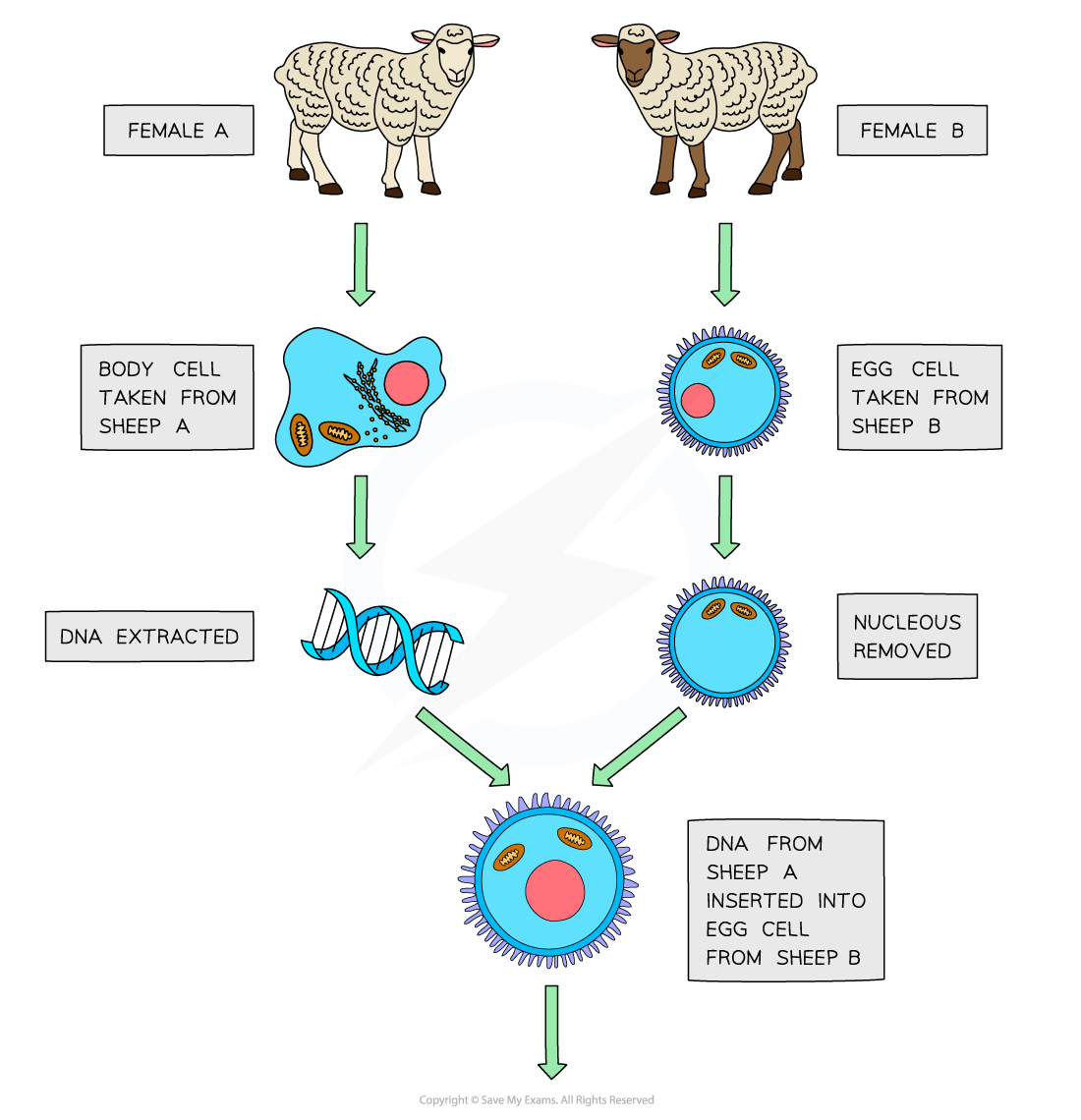
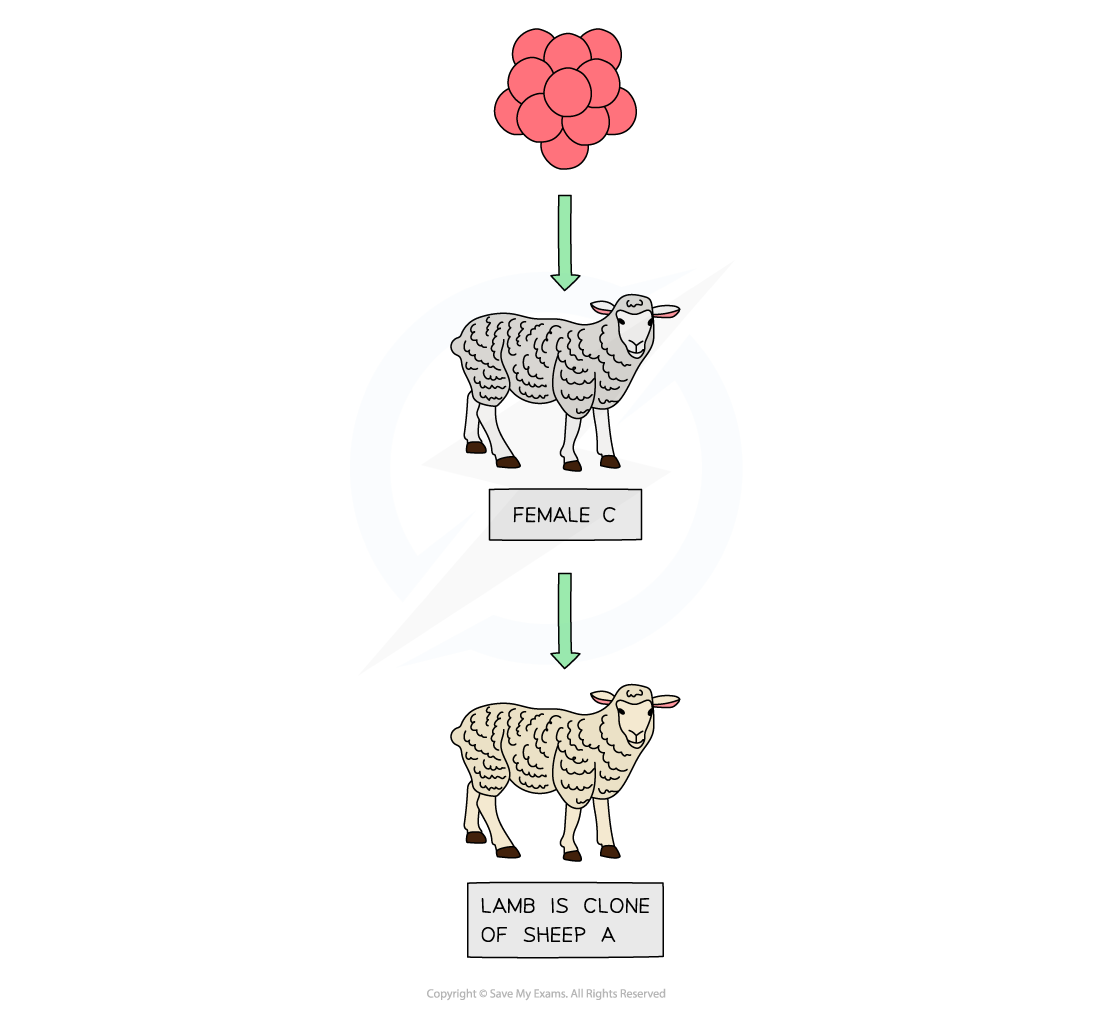
Adult cell cloning: the cloning technique used to produce the first cloned mammal, Dolly the sheep
Benefits & Risks of Cloning Table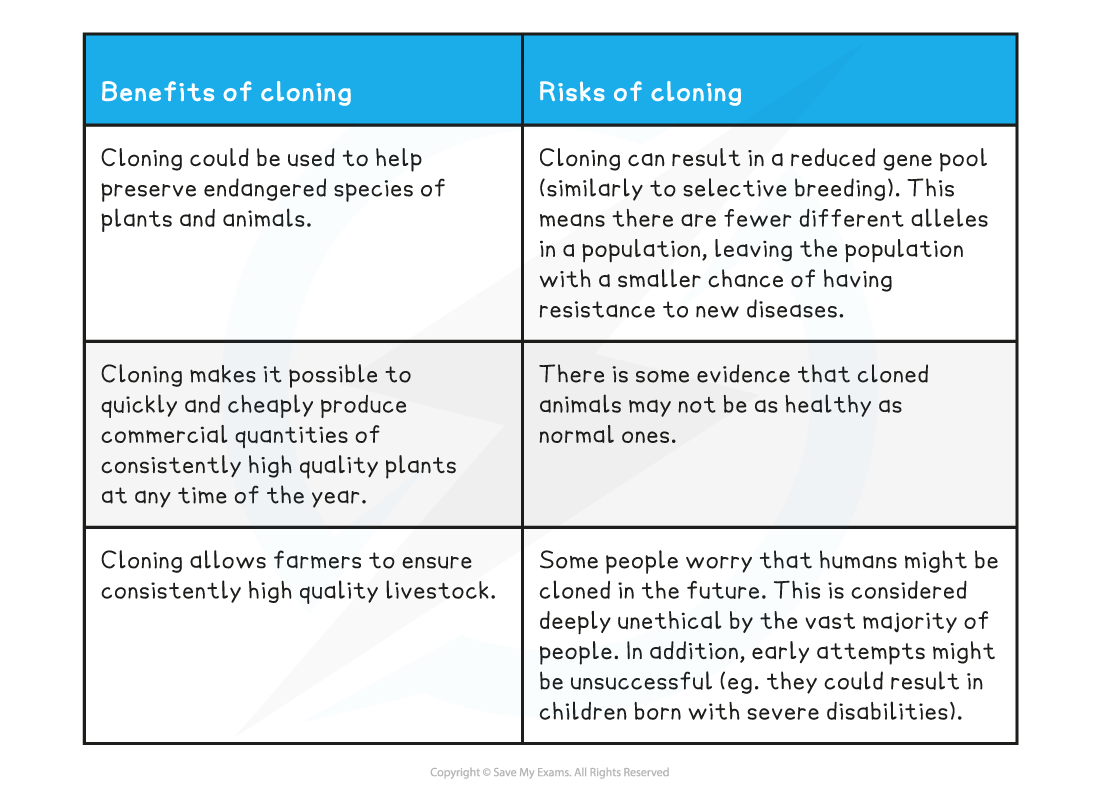
Cloning to Produce Human Proteins
- It took scientists 276 attempts to successfully clone a sheep
- Scientists created Dolly the sheep because they were exploring the possibility of producing medicines in the milk of mammals
- A transgenic animal that contains a gene within their genome that causes them to produce a useful compound within their milk is produced
- Once this has been done the animal can be cloned to produce a whole herd or flock, all of which produce the same special milk
- This process is known as pharming
- Pharming has been used to produce:
- Antibodies for targeting cancer cells in humans
- Blood clotting factor IX for haemophilia (blood clotting disorder)
- Alpha-1-antitrypsin for cystic fibrosis sufferers
转载自savemyexam

早鸟钜惠!翰林2025暑期班课上线

最新发布
© 2025. All Rights Reserved. 沪ICP备2023009024号-1








